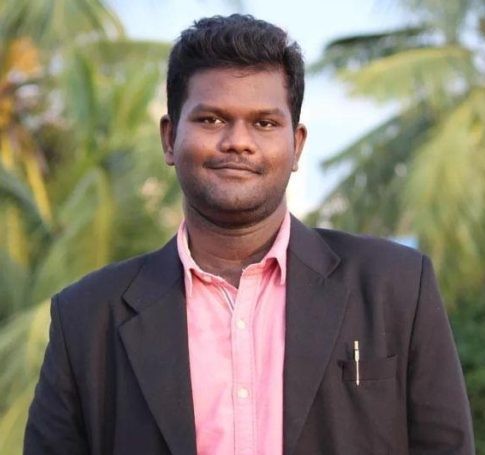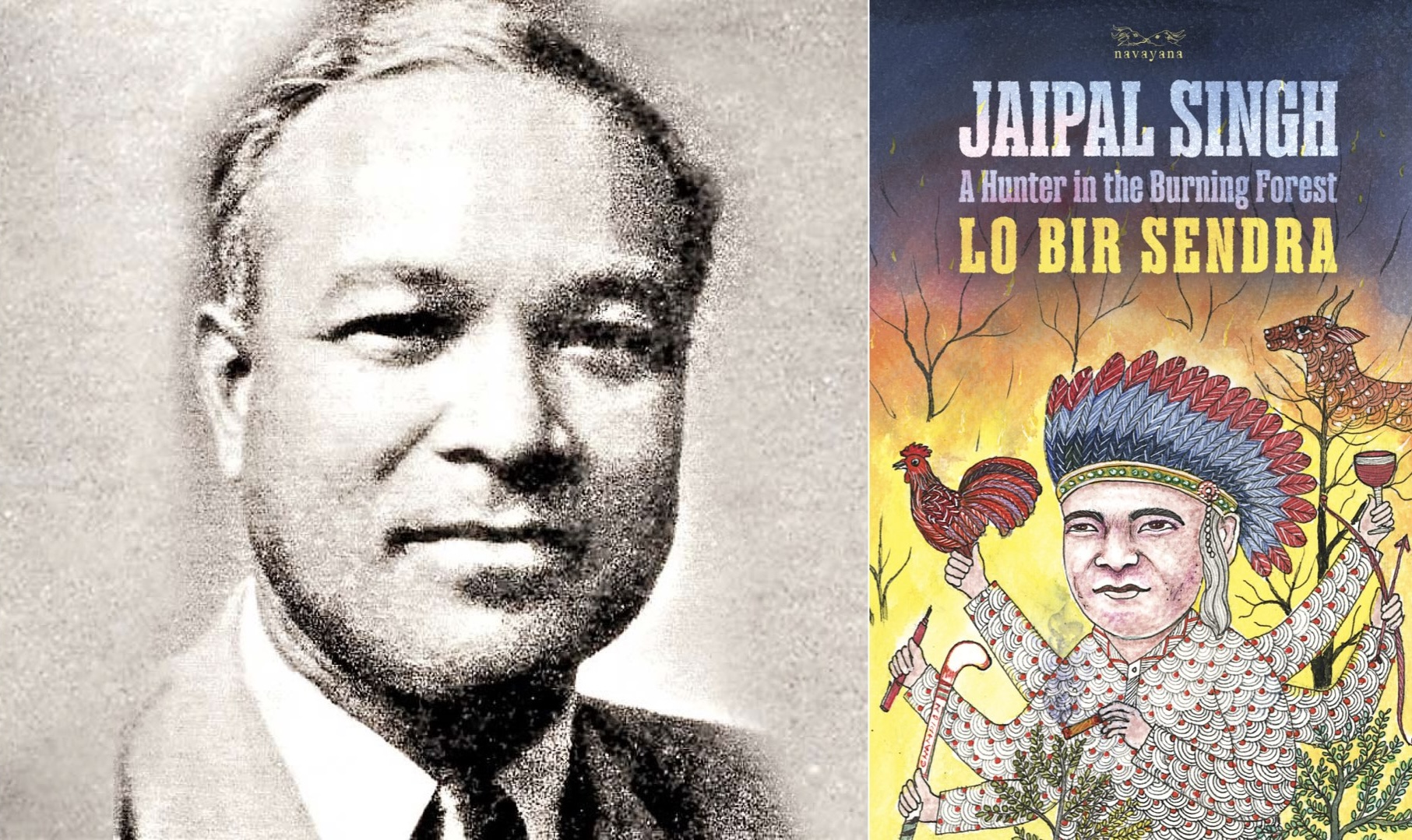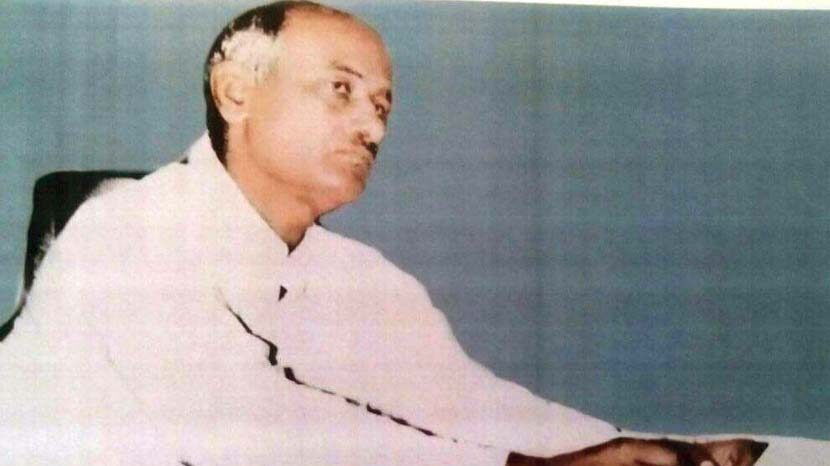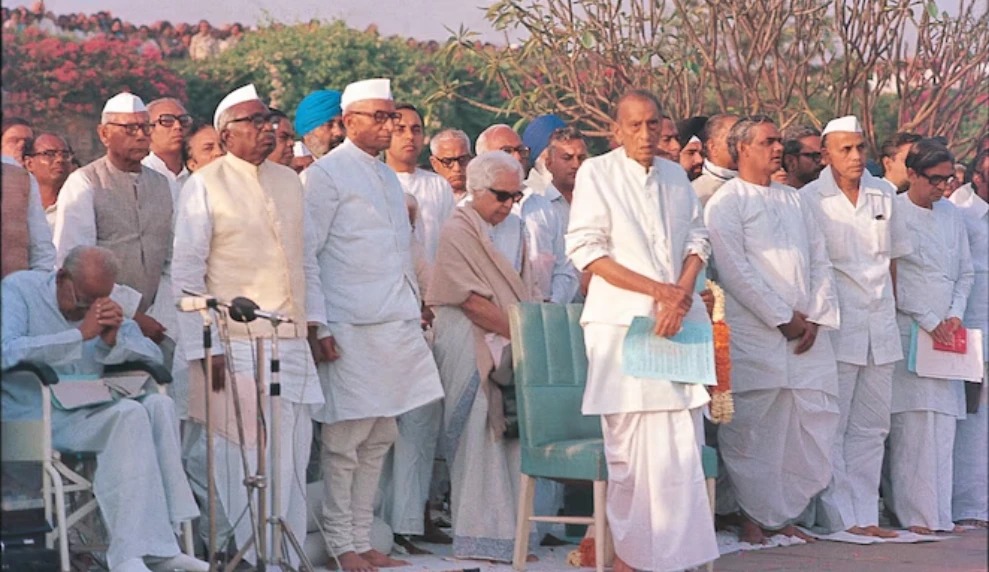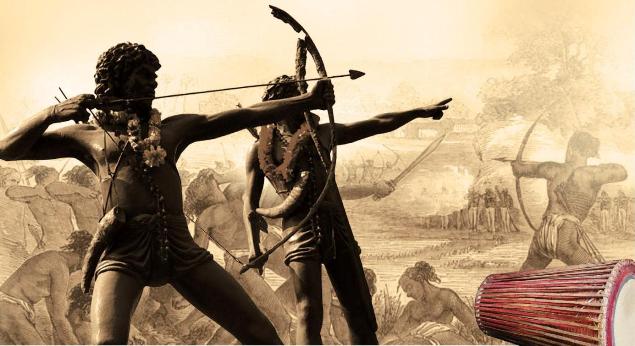On 14 October 1956, the stage was all set to mark an epic religious conversion ceremony.
Wearing a Bengali-styled white silk dhotar (dhoti) and a radiant white jacket and kurta[1], Dr B.R. Ambedkar ascended the grand rostrum specially designed to initiate the conversion ceremony to Buddhism. As he looked at the sea of followers numbering more than 7,00,000 on a 14-acre plot of land, he knew instantly that he was creating a monumental chapter in the history of humanity.

Never in the history of mankind did such a large mass of people assemble to embrace a new religion. Hitherto, we have seen cases where people converted to a new religion either due to deceit or to escape from the brandishing sword of ruthless fanatics or for any other ulterior purpose.
Dr Ambedkar himself cites multiple examples in his writings, ranging from Clovis I, Ethelbert, Sigebert, and Charles Martel to Vladimir of Russia and other medieval missionaries, to record cases where conversion has taken place without any religious motive[2]. Summing up the entire argument, he rightly asked:
Today religion has become a piece of ancestral property. It passes from father to son so does inheritance. What genuineness is there in such cases of conversion? The conversion of the Untouchables if it did take place would take after full deliberation of the value of religion and the virtue of the different religions. How can such a conversion be said to be not a genuine conversion? On the other hand, it would be the first case in history of genuine conversion.
Nagpur – the land of Nagas[3] – had the honour to mark this “first case in history of genuine conversion” where people assembled in such large numbers to adopt a new religion with a profound sense of informed enlightenment – the result of nearly 30 years of intense awakening carried out by Dr Ambedkar. Millions of former Untouchables and oppressed sections who had borne the brunt of the evil caste system for centuries jettisoned their old religion [Hinduism] and ways of life over one day to walk the noble path of Siddhartha Gautama as envisioned by their Babasaheb.
The then general secretary of the Maha Bodhi Society, Devapriya Valisinha, who witnessed the ceremony, recorded his reflections of the event in such a graphic manner that I do no more than reproduce his remarks:
Never did I see such an enthusiastic gathering in my life. Throughout the previous night and the whole of the morning of the 14th, the sky was rent with cries of “Bagawan Buddha-ki Jai” (Victory of Lord Buddha). Large and small batches of men, women and children, and some with babies in their arms, some with Buddhist flags in the hands, came in never ending streams from all parts of the country and poured into the enclosure. Thousands were seen squatting on the roadside waiting to take their places in the enclosure. We went round the city and wherever we went we saw procession after procession wending its way to the place of meeting. When we reached the place with difficulty the large force of volunteers made a way for our car to reach the back of the platform.
… As I looked round from the platform, I saw nothing but a sea of human heads and the scene was indeed heart lifting. This was unique, for never in the living memory had such a mass conversion taken place. Dr. Ambedkar was not in the best of health and yet he spoke for over an hour giving his reasons for embracing Buddhism. He himself gave the five precepts to the assembled mass and they repeated the words in a chorus and the sound must have travelled a long distance.
… When I presented an image of Lord Buddha and garlanded Dr. Ambedkar on behalf of the Maha Bodhi Society which found in him the fulfilment of its 70 years effort, tears of joy ran down my cheeks.[4]
The epic conversion ceremony made Dr Ambedkar extremely happy, as noted by Dr Savita Ambedkar:
We were utterly thrilled at the conversion programme turning out to be grander than we had anticipated. Two large albums of the pictures of the functions had been sent to us. A look at the pictures and another look at the tremendous response gave him [Babasaheb] great joy and satisfaction.
Sharing his immense happiness in a letter written to Valisinha on 30 October, Babasaheb wrote:
It certainly was a great event and the crowd that came forward for conversion was beyond my expectation. Thank the Buddha it all went well.
In the same letter, he spoke about the second major conversion ceremony that he initiated at Chandrapur on 16 October:
… there was another conference at Chanda on 16th October 1956 which was held in the evening. There also another conversion ceremony was held and some 3 lakhs of people were converted.[5]
As can be seen, Dr Ambedkar was able to convert more than 10,00,000 people in just a span of 3 days, a remarkable feat that no religious founder or prophet in the entire history could ever achieve.
It is exciting to note that this epic conversion left an indelible impact on the Indians living in Burma as well. In this connection, a letter written by the chief architect of the First Burmese Constitution, Justice U Chan Htoon, to Dr Ambedkar is worth citing:
My dear Dr. Ambedkar, please accept my heartiest congratulations on the greatest contribution you have made towards the re-establishment of Buddha Sasan in India. The hearts of all the Buddhists of Burma go out to you for your memorable achievement in this Jayanti Year.
The Buddha Sasana Council and Buddhists of Burma are greatly overjoyed to know that millions of the country-men of the Buddha are now beginning to come back into the light enkindled by the Buddha with your leadership. We are confident that Buddha Sasan would be re-established in all parts of India.
I have, on my part, been able, in a small scale, to follow up what you have started, while in Burma during the third WFB [World Fellowship of Buddhists] Conference. On the 28th of last month about 5,000 Tamils formally accepted Buddhism in a very impressive ceremony held in the Chatta Sangayana Great Cave in the presence of Mahatheras. Cabinet Ministers and Buddhist leaders, many more of the Tamils in Rangoon and other parts of Burma are being aroused to follow your lead.[6]
Interestingly, many of these Indian followers of Babasaheb had met him during his tour to Burma in 1954. They gave a grand welcome to Dr Ambedkar and had deep conversations with him on many issues. To cite just one incident: the Telugu people in Burma, under Mr Rao, arranged a terrific felicitation ceremony for Babasaheb in a luxurious hotel and presented him a citation on a silver plate[7]. Since then they had been eagerly waiting for a call from Babasaheb to embrace Buddhism, which ultimately happened in 1956 and had the support of Justice U Chan Htoon.

While most people are aware of the great conversion ceremony in Nagpur and, to a certain extent, the ceremony in Chandrapur, many do not know that Babasaheb Ambedkar wanted to hold the next major conversion ceremony in Bombay.
As a matter of fact, the conversion ceremonies in both Nagpur and Chandrapur had taken a heavy toll on the already failing health of Dr Ambedkar. Dr Savita Ambedkar observed:
Saheb’s colleague Barrister Rajabhau Khobragade had organized a conversion programme in Chandrapur on the 16th. He was importunate that we be present for the function. The strain of the Nagpur function had been so intense that Saheb was completely drained, but on account of the insistence of the workers and since it was a conversion event, we found it imperative to go.
The travel from Nagpur to Chandrapur had to be done by car, which caused great inconvenience to Saheb. To top it all was extreme exhaustion and a bad car journey! His tooth had started to play up too, wearing him down further. We had Rattu, Khobragade, Bhaurao Gaikwad, Varale, Avale Babuji and others for company. The conversion programme was slated for 9 p.m. We carried Saheb to the site, but the stage was at quite a height, so Saheb had to be literally lifted up to the stage.
Thousands of men and women of all ages were present along with their children to receive deeksha. They were lustily roaring the names of the Buddha and of Saheb. Despite his extreme weariness, Saheb got the crowd to recite the trisharana and the panchsheel and to take the oath. The enormous swarm of people was aching to hear some utterance from the mouth of their revered leader, but Saheb was far too gone in terms of enthusiasm and vitality to oblige. His ear had begun to ache too.
We returned to the dak bungalow immediately after the function, and I administered medicine to him. I also put drops in his ear, but relief wouldn’t arrive. Saheb had no dinner that evening, not even a cup of tea. He groaned and keened all night because of the pain in his ear. None of us could get a wink of sleep either. The next day we decided to take the train to Nagpur because the road journey the previous day had been horrendous. Saheb had been battling against his health through sheer willpower on account of the extreme desire for the conversion.[8]
Despite his deteriorating health condition, Babasaheb Ambedkar was committed to continue mass conversion ceremonies across India, and in this process, he decided to initiate a massive ceremony at the Mahalaxmi Racecourse ground (spread over nearly 200 acres) in Bombay on 16 December[9]. In this process, all the arrangements were made, and air tickets were booked for his visit to Bombay on 14 December from Delhi.

Courtesy: British Library
Having previously accepted the invitation from popular film stars Kumarsen and Shobana Samarth, Dr Ambedkar decided to stay at their house along with Dr Savita Ambedkar during his short visit to Bombay.
Dr Ambedkar knew the Samarth family through his close friend Barrister M. B. Samarth, who was the brother of Kumarsen. It is very interesting to note that actresses Nutan and Tanuja were the daughters of Kumarsen and Shobana[10]. By 1956, the would-be evergreen actress Nutan was a rising star, with multiple blockbusters to her list of achievements. She had even bagged a Filmfare award for Seema (1955). We do not know if Nutan had the opportunity to meet Dr Ambedkar; she might have met him owing to the friendship that her parents shared with him.
While preparations were underway for a massive conversion ceremony in Bombay, millions of followers of Babasaheb suffered a terrible blow. He passed away in his sleep on 6 December 1956 in Delhi. Their desire to have Dr Ambedkar initiate the conversion ceremony in the city he had grown up in and exercised his intellectual, journalistic and legal heft, remained unfulfilled.

With his death, thinking humanity lost the greatest human being, who raised a banner of revolt against the darkening of the mind and the depredation of life, who pilloried religions that debased man and woman, and who contended that “dignity and thought” were central to reclaiming the lost sacred human personality.
Nevertheless, the impact of Dr Ambedkar’s conversion was extraordinarily impressive, not only in terms of the number of converts (which would be over a crore now) but also in the matter of initiating a tremendous cultural revolution. The chief component of this revolution is built on hope, and as the legend himself said:
… The rich have everything. They need not live on hope. They live on their possession … Religion is necessary for the poor. Religion is necessary for the Depressed people. The poor man survives on hope. The root of life lies in hope. What will happen to the life if the hope is lost? Religion makes hopeful, and gives a message to the depressed and the poor – do not be afraid, life will be hopeful, it will be.[11]
By instilling the message of hope in their hearts and working through democratic means, crores of his followers are following in his footsteps to secure justice for all the oppressed sections. With the rapid dissemination of Ambedkarism in our troubled times, the importance of conversion is going to assume the greatest significance.
This is also the time, or rather, it is high time, to reflect on certain important things. As the chief architect of the Indian Constitution, Babasaheb Ambedkar created a new history. He was at the peak of his career as an intellectual and an undisputed leader of the oppressed.
After finishing the drafting of the Indian Constitution, many doctors and well-wishers requested Babasaheb to take complete rest, as his health was in very poor condition. He could have obliged their request, but he did not. After 1951, he began writing new books with increased enthusiasm, like Revolution and Counter-Revolution, Riddles in Hinduism, The Buddha and his Dhamma, and many more. We have also seen how he was involved in initiating conversion ceremonies at the COST OF HIS VALUABLE HEALTH!
Why did Babasaheb Ambedkar sacrifice his valuable health to write the books? Why did he take on a mission to have his followers embrace Buddhism through multiple ceremonies, which took a heavy, irreparable, and devastating toll on his health? Why did he cherish a hope that his people would sacrifice everything to spread Buddhism? These are some of the questions that we need to seriously ponder.
In this context, is it not our responsibility to spend at least some time of our daily life reading the works of our emancipator Babasaheb Ambedkar? Can’t we begin reading him from today? In this digital age, we have platforms like https://baws.in to access all the works of Babasaheb online. Be it online or offline, one must start reading Babasaheb Ambedkar, for it is only through his writings that we can find our path to emancipation. On this epic conversion day [14th October], let us take a pledge to read Babasaheb Ambedkar for at least 30 minutes of our daily life to reflect on his vision for Prabuddha Bharat.
References
[1] ‘Babasaheb: My Life with Dr Ambedkar’ by Dr Savita Ambedkar, page 204
[2] https://baws.in/books/baws/EN/Volume_05/pdf/419
[3] https://baws.in/books/baws/EN/Volume_17_03/pdf/562
[4] https://baws.in/books/baws/EN/Volume_17_03/pdf/574
[5] https://baws.in/books/baws/EN/Volume_17_01/pdf/471
[6] https://baws.in/books/baws/EN/Volume_17_03/pdf/575
[7] ब्रह्मदेश में अस्पृश्यता न होने के कारण ही आप व्यापार और व्यवसाय में उन्नति कर पाए (Brahmadesh [Burma] mein Asprishyata na hone ke karan hi aap Vyapar aur Vyavasaya mein Unnati kar paye), BAWS (Hindi), Volume 40, page 364
[8] Babasaheb: My Life with Dr Ambedkar’ by Dr Savita Ambedkar, page 206. To read more about Shri B. D. Khobragade, see Dipankar Kamble’s ‘Dewaji: Making of an Ambedkarite Family’
[9] ‘डॉ बाबासाहेब आंबेडकर यांचे दलितेतर सहकारी’. ले. योगीराज बागुल (‘Dr Babasaheb Ambedkar Yanche Dalitetar Sahakari’ by L.Yogiraj Bagul’
[10] To read more about the movies watched by Dr Ambedkar and the film and music personalities he had interacted with, see my article https://www.theculturecafe.in/p/an-unexplored-side-of-dr-ambedkar
[11] https://baws.in/books/baws/EN/Volume_17_03/pdf/570
Forward Press also publishes books on Bahujan issues. Forward Press Books sheds light on the widespread problems as well as the finer aspects of Bahujan (Dalit, OBC, Adivasi, Nomadic, Pasmanda) society, culture, literature and politics. Contact us for a list of FP Books’ titles and to order. Mobile: +917827427311, Email: info@forwardmagazine.in
